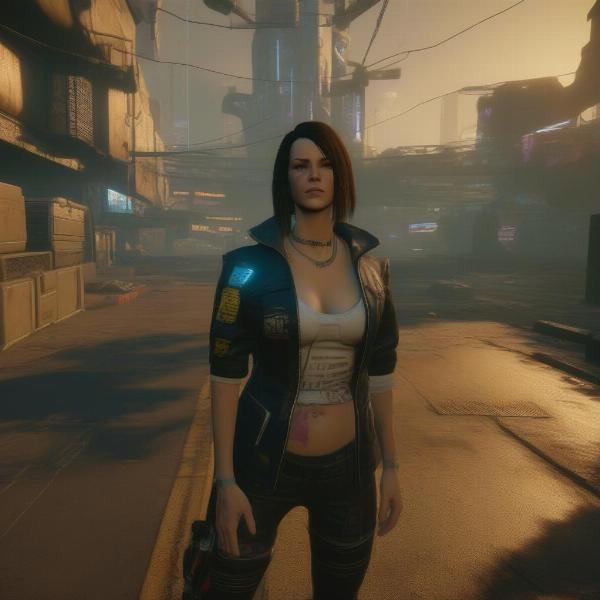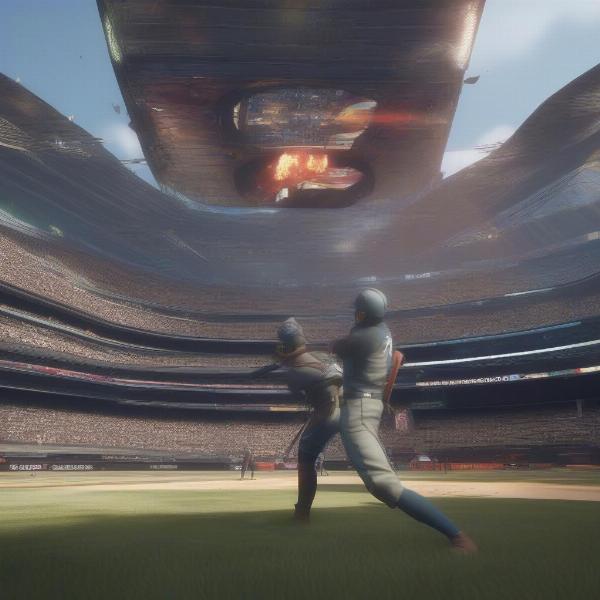Cyberpunk 2077’s tumultuous launch serves as a crucial case study in how even the most anticipated titles can fall short, highlighting the limitations of hype in truly saving a game. At SupremeDuelist.blog, we delve deep into the mechanics and meta of gaming, analyzing not just the wins but the profound failures too. This article examines why, despite massive marketing budgets and significant pre-release buzz, Cyberpunk 2077 stumbled, and more importantly, what the industry and players can learn from this experience. We will explore the core issues that hype often masks and how a focus on solid game design and player experience remains crucial for long-term success.
The Perils of Unrealistic Hype
Cyberpunk 2077 was arguably one of the most hyped video games of all time. Years of marketing, stunning trailers, and the pedigree of CD Projekt Red fueled an almost unachievable level of expectation. However, the reality of the game at launch was a stark contrast to the marketing promises. This situation underscores a crucial point: no amount of hype can truly save a game with fundamental flaws. Hype can certainly generate sales, but long-term success relies on delivering a quality, engaging experience that lives up to, or even surpasses, player expectations.
The over-reliance on hype creates a cycle of potential disappointment. Players are sold on a vision, often without fully understanding the realities of the product they are purchasing. When the game fails to meet these artificially inflated expectations, the result is widespread backlash and damaged brand reputation, which is difficult to recover from. This isn’t unique to Cyberpunk 2077; many other games have struggled after generating huge anticipation, underscoring that marketing alone is not a substitute for solid game development. This begs the question: What critical errors were made?
Core Issues Beyond the Hype: What Actually Went Wrong?
While the pre-release hype of Cyberpunk was enormous, the core problems stemmed from deeper issues. The game was riddled with bugs, from minor graphical glitches to game-breaking errors. Beyond the technical problems, there were also significant issues with the game’s core mechanics and design choices. The AI was often illogical, the driving mechanics were clunky, and the much-touted open-world felt shallow and lacking in meaningful interactions.
One common theme echoed by players was a lack of player agency and a disconnect between the game’s world and the player’s influence on it. The game offered impressive environments but did not provide players with enough engaging activities to justify its vastness. This led many to feel like passive observers rather than active participants, highlighting the difference between a visually appealing world and one that is truly engaging. The contrast to CD Projekt Red’s previous work, The Witcher 3, was particularly notable, further emphasizing the magnitude of the problems within Cyberpunk. This leads us to question, why these problems weren’t caught before the game’s release?
 Cyberpunk 2077 major glitches
Cyberpunk 2077 major glitches
Technical Problems and Lack of Optimization
Cyberpunk 2077 suffered from a massive amount of technical problems. These included poor performance on base consoles, frequent crashes, and a myriad of graphical glitches and bugs. This was not only frustrating to players, but also damaging to the overall experience. The lack of optimization was a key concern, with even high-end PCs struggling to run the game smoothly. This widespread technical instability was a major contributor to the backlash, as it directly impacted the playability of the game and made it difficult to enjoy. As technology advanced and further patches were released, most of the initial problems were resolved.
Disconnect Between World and Player Agency
The world of Night City was visually stunning, but it often felt like a static backdrop rather than a living, breathing environment. While there were side-quests and characters, these felt shallow and lacked depth, offering little sense of progression or agency. The game offered limited options in how to impact the world and its narratives, reducing its replayability. For an experience that was promoted as an RPG with deep player choices, this is a severe misstep. “I was looking forward to making my mark on Night City,” says game critic Amelia Reyes, “but felt more like a tourist observing events rather than participating in them. The decisions I made had little impact on my overall experience.”
Why the “Save” Mechanics Couldn’t Save the Game
The concept of “saving” the game has a double meaning here. Of course, we have the save mechanic, which at one point was also problematic, but it also refers to how developers aim to rescue their game. In this case, pre-release hype certainly failed, but even post-release updates could not fully save Cyberpunk from its initial missteps. While CD Projekt Red worked hard to patch bugs and improve performance, the underlying design issues persisted. This illustrates that while technical fixes are necessary, they are not enough to overcome fundamental flaws in gameplay or world design. The initial damage to reputation and player trust was so severe that even substantial improvements couldn’t fully erase the negative first impressions. What can be done differently to avoid the hype trap?
Lessons for the Future: Focus on Substance, Not Just Hype
The Cyberpunk 2077 case offers invaluable lessons for both the gaming industry and players. Firstly, developers need to prioritize delivering polished, well-optimized games over chasing hype-driven marketing cycles. Building a game that lives up to the players’ expectations will ultimately lead to more sustainable success. Players should also be more critical of pre-release marketing and focus on actual game play videos and reviews to better manage their expectations.
Secondly, a focus on creating truly engaging game-play systems and deep player experiences is crucial. This requires meticulous design, thorough testing, and a commitment to quality over profit. Developers should create worlds that feel alive and interactive, giving the player meaningful choices and agency over their experience. Games should be judged on their merits, not on the promises made by marketing departments. As a player, it is important to acknowledge the distinction between hype and reality and manage expectations accordingly. “The lesson we learn from Cyberpunk is that you can’t buy player loyalty.” commented game designer, David Chen. “That’s something that needs to be earned through consistent quality.”
 Cyberpunk 2077 expectations vs reality
Cyberpunk 2077 expectations vs reality
What Can Developers Do Differently?
Developers should prioritize transparency and avoid overpromising. Building a game that is honest about its limitations will set reasonable expectations and build goodwill with the player base. Regular updates, community engagement, and a willingness to address player concerns can create a more positive game development cycle. The focus should be on player experience and enjoyment rather than marketing gimmicks and artificial anticipation. This will foster long-term player loyalty and better overall sustainability for the game. Ultimately, actions speak louder than words.
How Can Players Avoid Being Misled?
Players also have a role to play in shaping the gaming landscape. By being more discerning about what they believe based on marketing materials and more focused on the actual substance of the game, they can influence the future of development. Waiting for impartial reviews and player feedback before purchasing can help to avoid disappointment and ensure that developers are held accountable for the quality of their work. Players should vote with their wallets and support the games that prioritize player experience over profit, fostering a positive cycle for the whole industry.
Conclusion
Cyberpunk 2077’s situation is a powerful reminder that hype alone cannot save a game. At SupremeDuelist.blog, we believe that long-term success is built on solid game mechanics, engaging player experiences, and a commitment to quality. While marketing and hype can generate initial sales, they are not a substitute for a polished and compelling product. By learning from the failures of games like Cyberpunk 2077, both developers and players can work towards a gaming future where substance is prioritized over hype. The path to a sustainable and enriching gaming experience lies in focusing on the game and not the marketing surrounding it. Let’s not allow the hype to distract from what truly matters: quality gameplay.
What are your thoughts? Let us know in the comments below! Make sure to visit SupremeDuelist.blog again for more analysis and insights into the world of gaming.
Leave a Reply